Foot & Ankle
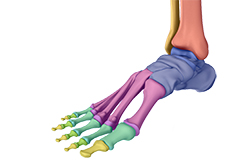
Normal Anatomy of the Foot and Ankle
The foot and ankle are a complex joint involved in movement and providing stability and balance to the body. The foot and ankle consist of 26 bones, 33 joints, and many muscles, tendons, and ligaments.
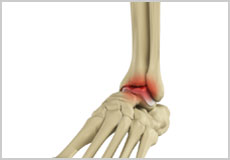
Foot and Ankle Arthritis
Arthritis is inflammation resulting from the degeneration of cartilage in the joint causing joint pain, swelling, and stiffness resulting in restricted movements. Arthritis of the foot and ankle joint can occur due to fractures, dislocation, inflammatory disease, or congenital deformity.
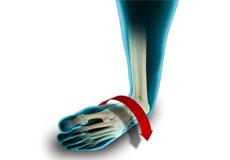
Ankle Instability
The joints of the ankle are held in place and stabilized by strong bands of tissue called ligaments. Ankle instability is a chronic condition characterized by a recurrent slipping of the outer side of the ankle. It usually results from repeated ankle sprains, which are injuries to the ligaments. Ankle instability is generally noticed when you move your ankle joint but can also occur while standing.
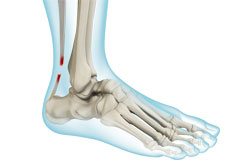
Achilles Rupture
The Achilles tendon is a strong fibrous cord present behind the ankle that connects the calf muscles to the heel bone. It is used when you walk, run and jump. The Achilles tendon ruptures most often in athletes participating in sports that involve running, pivoting and jumping. Recreational sports that may cause Achilles rupture include tennis, football, basketball, and gymnastics.

Ankle Sprain
A sprain is the stretching or tearing of ligaments, which connect adjacent bones and provide stability to a joint. An ankle sprain is a common injury that occurs when you suddenly fall or twist the ankle joint or when you land your foot in an awkward position after a jump. Most commonly it occurs when you participate in sports or when you jump or run on a surface that is irregular.
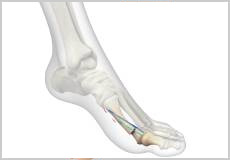
Minimally Invasive Bunion Surgery
Minimally invasive bunion surgery, also known as keyhole bunion surgery, is a procedure to treat a foot condition called a bunion or hallux valgus.
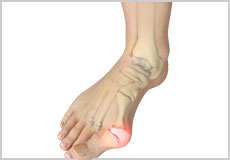
Bunion Surgery
A bunion is an abnormal bony protuberance on the outer surface of the big toe that can be painful. The surgical method of removal or excision of a bunion is known as a bunionectomy. The goal of bunion surgery is to relieve pain and restore the normal position and function of the big toe.
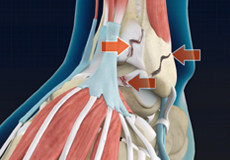
Complex Foot and Ankle Surgeries
Complex foot and ankle surgeries are procedures employed to treat foot and ankle structures with deformities, injuries, structural issues, and damage from diseases like diabetes or arthritis.
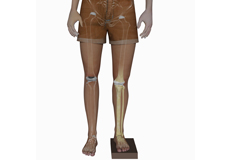
Complex Lower Extremity Deformity
Coming soon
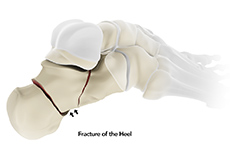
Foot Fracture
Trauma and repeated stress can cause fractures in the foot. Extreme force is required to fracture the bones in the hind foot. The most common type of foot fracture is a stress fracture, which occurs when repeated activities produce small cracks in the bones.
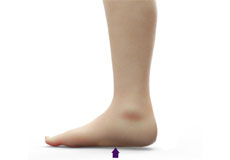
Flatfoot
Flatfoot, also known as “fallen arches” or Pes planus, is a deformity in children’s feet where the arch that runs along the sole of the foot collapses to the ground or is not formed at all. Flatfoot is normal in the first few years of life as the arch of the foot usually develops between the age of 3 and 5 years.
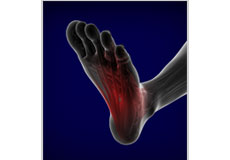
Foot Pain
The foot is composed of bones, ligaments, tendons, and muscles. As your feet bear the weight of your entire body, they are more prone to injury and pain.
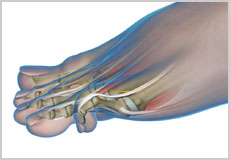
Hammertoe
A hammertoe is a deformity of a lesser toe (second through fifth toes), where the toe is bent upward at the toe’s middle joint, resembling a hammer. The bent portion may rub against the shoe causing pain, irritation and develop corns.
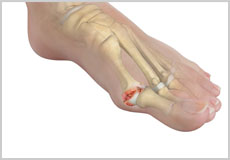
Hallux Rigidus (Big toe arthritis)
A stiff big toe, also called hallux rigidus, is a form of degenerative arthritis affecting the joint where the big toe (hallux) attaches to the foot. The toe typically becomes stiff at the base and is sometimes called a "frozen joint".
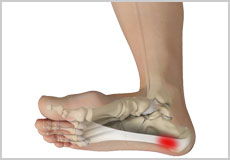
Plantar Fasciitis
Plantar fasciitis refers to the inflammation of the plantar fascia, a thick band of tissue that is present at the bottom of the foot. It runs from the heel bone to the toes and forms the arch of your foot.
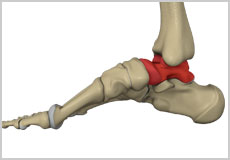
Talus OCD
The talus is a small bone at the ankle joint that connects the heel bone and the shinbones, enabling up and down movement of the foot.
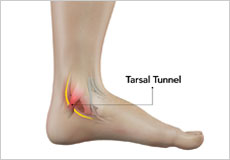
Tarsal Tunnel Syndrome
The tarsal tunnel is a narrow passageway that lies on the inside of your ankle and runs into the foot. It encloses arteries, veins, tendons and nerves that supply the foot. The tunnel holds very limited space as it is formed between bones and overlying fibrous tissues. Within the tarsal tunnel lies and runs a nerve called ‘posterior tibial nerve.
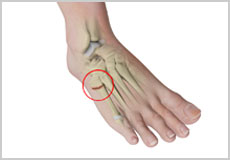
Stress Fracture of the Foot
A stress fracture is a small crack in a bone which occurs from an overuse injury. It commonly develops in the weight-bearing bones of the lower leg and foot. When the muscles of the foot are overworked, or stressed they are unable to absorb the stress and transfer it onto the bone, which cracks under the pressure.
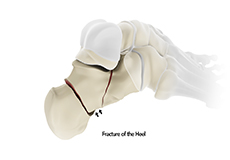
Heel Fractures
The calcaneus or heel bone is a large bone found at the rear of the foot. A fracture is a break in a bone from trauma or various disease conditions.
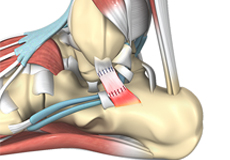
Revision Foot and Ankle Surgery
Foot and ankle surgery is performed when injuries or conditions are severe and conservative treatment methods are inadequate. It may involve repairing, realigning, or reconstructing structures in the foot and ankle. The procedure is safe and outcomes are generally good, but occasionally failure may occur due to various reasons. Revision foot and ankle surgery is recommended to correct problems and to improve results.

Peroneal Tendonitis
Peroneal tendonitis is inflammation of the peroneal tendons in the ankle due to an acute or overuse injury. It is common in those participating in sports involving repeated ankle movement such as running.
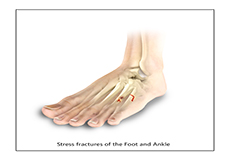
Toe and Forefoot Fractures
The forefoot is the front of the foot that includes the toes. Fractures occurring in this part of the foot are painful, but often are not disabling. There are 2 types of fractures namely, traumatic fracture and stress fracture. Traumatic fractures occur when there is a direct impact of your foot on a hard surface. Stress fractures are tiny hairline cracks in the bone, most commonly caused due to repeated stress.
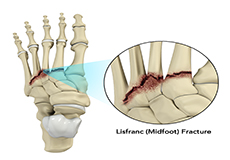
Lisfranc (Midfoot) Fracture
The Lisfranc joint or tarsometatarsal joint refers to the region in the middle of the foot. It is a junction between the tarsal bones (seven bones in the foot arch) and metatarsal bones (five long bones in the foot). Lisfranc fractures can occur due to a fall from a height or traumatic motor vehicle accidents.

Metatarsalgia
Metatarsalgia is a condition in which pain and inflammation are caused due to overuse or injury to the ball of the foot - the area between the toes and the arch. This condition mainly affects the joints at the base of the five-toe bones.

